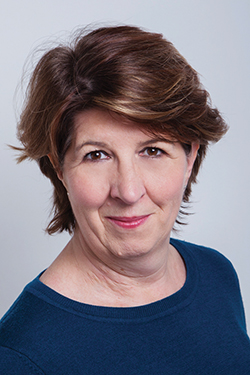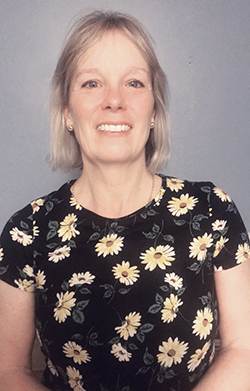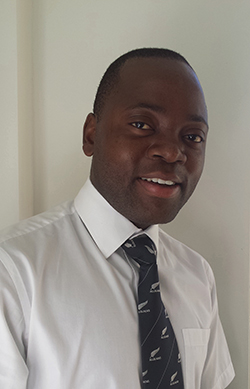The clue to the role of the general practice nurse (GPN) is in the name. The word ‘general’ implies that each GPN should have a comprehensive knowledge of nursing issues and be able to manage whatever and whoever comes through the practice door, or at least know who to refer them on to. In fact, when it comes to GPNs, the word ‘general’ represents a skill in itself.
Except in nursing terms, the definitions of the word may be shifting, with societal and demographic changes meaning GPNs may be required to see an ever-narrower profile of patients. A report by the Queen’s Nursing Institute (QNI) recently explored the changing nature of general practice, including the roles and responsibilities of GPNs, with one of the most frequently identified areas of care being the management of long-term conditions (‘General Practice Nursing in the 21st Century: A Time Of Opportunity’ — www.qni.org.uk). The report detailed that, as well as traditionally accepted GPN roles such as immunisation, travel health and sexual health, one of the most common growing areas of responsibility is wound care.
Except in nursing terms, the definitions of the word may be shifting, with societal and demographic changes meaning GPNs may be required to see an ever-narrower profile of patients. A report by the Queen’s Nursing Institute (QNI) recently explored the changing nature of general practice, including the roles and responsibilities of GPNs, with one of the most frequently identified areas of care being the management of long-term conditions (‘General Practice Nursing in the 21st Century: A Time Of Opportunity’ — www.qni.org.uk). The report detailed that, as well as traditionally accepted GPN roles such as immunisation, travel health and sexual health, one of the most common growing areas of responsibility is wound care.
Government cannot say that it wasn’t warned. Writing in 2016, Edwin Chamanga said that, ‘community patients are now presenting with complex wounds as a result of multiple comorbidities due to longevity… this places a huge demand on the provision of complex wound care in the community’ (‘Wound assessment and treatment in primary care’ — www.independentnurse.co.uk). Similarly, Linda Nazarko warned that ‘community nurses are dealing with more complex wounds than ever before’ (‘Good hygiene when dressing wounds’ — www.nursinginpractice.com).
Writing in the Guardian, Dennis Campbell discusses the current ‘hidden health crisis’ of chronic wounds, where a condition such as diabetes, venous disease or arterial disease ‘increases someone’s risk of developing a wound in the first place and of it then not healing for a long time’ (‘Chronic wounds: the hidden health crisis hitting 2m Britons’ — www.theguardian.com).
Interestingly, some community-based clinicians are now beginning to look at wounds differently, with some feeling that chronic wounds need to be treated as a long-term condition in their own right, much like diabetes or heart conditions (‘Why the NHS needs to radically rethink chronic wound care’ — www.independentnurse.co.uk).
Writing in the Guardian, Dennis Campbell discusses the current ‘hidden health crisis’ of chronic wounds, where a condition such as diabetes, venous disease or arterial disease ‘increases someone’s risk of developing a wound in the first place and of it then not healing for a long time’ (‘Chronic wounds: the hidden health crisis hitting 2m Britons’ — www.theguardian.com).
Interestingly, some community-based clinicians are now beginning to look at wounds differently, with some feeling that chronic wounds need to be treated as a long-term condition in their own right, much like diabetes or heart conditions (‘Why the NHS needs to radically rethink chronic wound care’ — www.independentnurse.co.uk).
One example of an innovative practice-based wound care initiative was detailed in the RCN bulletin magazine, and provided by Emma Williamson, a practice nurse manager in Bury St Edmunds. In an attempt to speed up chronic wound healing times, Williamson started researching National Institute for Health and Care Excellence (NICE) wound care guidelines and consulting with colleagues to identify the most important elements required in a general practice wound care clinic. Following a period of consultation, she drew up a checklist of measures that would assist GPNs to maximise the care of patients with wounds. The checklist included factors such as measuring the wound, taking swabs to assess infection risk, treating pain and checking diabetic markers. Nurses were also asked to refer patients to diabetic, smoking cessation and exercise programmes, where relevant. The result was that patients’ wounds healed faster, they were discharged faster, and GPNs had more time to dedicate to other tasks (‘Transforming wound care’ — www.rcn.org.uk).
Of course, not every GPN is going to have the time or inclination to set up an award-winning holistic wound care clinic. However, with care being increasingly moved into the community and an upward trend in older patients presenting with long-term conditions, many GPNs will need to become experts in wound care sooner than they might think.
Of course, not every GPN is going to have the time or inclination to set up an award-winning holistic wound care clinic. However, with care being increasingly moved into the community and an upward trend in older patients presenting with long-term conditions, many GPNs will need to become experts in wound care sooner than they might think.
 There is a huge and rapidly growing number of patients with wounds. GPNs are at the frontline, as most patients initially present to general practice. Recently, I have been hearing stories of patients being turned away from general practice, community nursing services, and A&E, leaving them with no access to clinical care. This situation is unacceptable, but it is also unacceptable to expect GPNs to take on this burden alone and become wound care experts.
There is a huge and rapidly growing number of patients with wounds. GPNs are at the frontline, as most patients initially present to general practice. Recently, I have been hearing stories of patients being turned away from general practice, community nursing services, and A&E, leaving them with no access to clinical care. This situation is unacceptable, but it is also unacceptable to expect GPNs to take on this burden alone and become wound care experts.Chronic wounds are caused by underlying long-term conditions that lead to skin breakdown or non-healing. Dressings alone will have little impact on healing if the underlying long-term condition is not accurately diagnosed and treated appropriately. This requires expertise and joined-up care, including access to the appropriate services, such as tissue viability, podiatry and vascular services.
GPNs have an essential role to play as frontline staff. Some, like Emma Williamson, will develop initiatives that tackle the challenge ‘in-house’. Others are working with their commissioners and partner provider organisations (such as tissue viability services, community nursing service or organisations such as the Lindsay Leg Club) to design joined-up services that ensure that patients with chronic wounds have access to appropriate expertise. While clinical care should follow best-practice guidance, different service provision options will suit different settings.
Inevitably, GPNs will continue to be the initial point of contact for clinical care for many patients with wounds. They have a fundamental role to play in wound care by promoting healthy lifestyles that reduce the risk of developing chronic wounds and promote healing and providing initial care. Some will also choose to develop expert in-house wound care services, but all GPNs should support the current drive, led by the National Wound Care Strategy Programme, for better service provision for patients with wounds.
Una Adderley - Director, National Wound Care Strategy Programme
 As a general practice nurse (GPN), I would agree we are specialist generalists. Many of us have our own areas of interest within that where we may have a higher level of expertise, e.g. respiratory, diabetes, sexual health, etc and this often reflects the needs of our local teams, environment and patient population. General practice nursing has evolved over many decades and one thing we have proven is the ability to be flexible and adaptable, learning and developing the skills we need to offer the best service we can to our patients and work places.
As a general practice nurse (GPN), I would agree we are specialist generalists. Many of us have our own areas of interest within that where we may have a higher level of expertise, e.g. respiratory, diabetes, sexual health, etc and this often reflects the needs of our local teams, environment and patient population. General practice nursing has evolved over many decades and one thing we have proven is the ability to be flexible and adaptable, learning and developing the skills we need to offer the best service we can to our patients and work places.I now work a dual role of GPN/ANP, seeing patients for both long-term conditions and acute presentations and, as such, I have needed to widen my skill base. Within both chronic and acute care, I have seen a growing need to be aware of wound care principles. As an ANP, I may be the first person to see a wound and diagnose its cause, and within this consultation I may need to select a suitable dressing. As a GPN, there are times when a patient will want advice and assistance with a wound and my district nursing colleagues may not be available to help. Wound care is part of holistic patient care. Having basic wound care knowledge and ability on my part is therefore essential.
In my current role, I work alongside district nursing, ANP, GP, pharmacist and GPN colleagues. We all share the same building and this makes communication on a daily basis easy and helps me to feel part of the community nursing team.
Those brief corridor conversations are valuable and having someone you know to turn to for a second opinion or advice is extremely helpful.
I do not think we are asking all GPNs to become wound care experts. We do, however, need to have an interest and awareness and to share with and seek from colleagues the basic resources and information required to safely care for patients’ wounds when the experts (in my case, the district nurses) are not available.
Jaqui Walker - General practice nurse, advanced nurse practitioner, Falkirk, Scotland; education advisor, NHS England for Scotland (NES)
 Wound care is a frequent clinical task on the GPN’s appointment list. GPNs are the ideal clinicians to assess, manage and resolve a plethora of wounds. There is a key factor which must be considered for a successful outcome for patients. Education should be incorporated into patient consultations as prevention is better than a cure approach. For service users who require chronic disease management, mentioning skin maintenance at their reviews will encourage them to form a good skincare routine involving moisturisers, hydration and a well-balanced diet. Some patients will not understand the severity of small lacerations and skin breakdown and their contribution to chronic wounds. Designing a colourful, basic leaflet identifying two or three small wounds could prove to be invaluable to patients who are at risk.
Wound care is a frequent clinical task on the GPN’s appointment list. GPNs are the ideal clinicians to assess, manage and resolve a plethora of wounds. There is a key factor which must be considered for a successful outcome for patients. Education should be incorporated into patient consultations as prevention is better than a cure approach. For service users who require chronic disease management, mentioning skin maintenance at their reviews will encourage them to form a good skincare routine involving moisturisers, hydration and a well-balanced diet. Some patients will not understand the severity of small lacerations and skin breakdown and their contribution to chronic wounds. Designing a colourful, basic leaflet identifying two or three small wounds could prove to be invaluable to patients who are at risk. Although education is essential for successful wound outcomes, it is also vital that GPNs have sufficient skills, time and knowledge. Working in an autonomous role can be challenging when working with complex wounds. Time is required to understand and tailor a care plan to reflect individual patient’s needs, liaise with multidisciplinary colleagues and refer when necessary. Essential resources are available online to assist GPNs, as well as local guidelines from clinical commissioning groups (CCGs), which include formularies for dressing selection. Woundcare updates are available on a frequent basis for general wounds and/or chronic wounds, such as leg ulcers. Updates are an opportunity to refresh knowledge and keep up to date with evidence-based practice. GPNs can be viewed as woundcare experts, but only when employers supply them with the best resources available.
Stefan Franks - General practice nurse, Allied Medical Practice, Brighton

As nurse generalists, making a difference in the lives of our patients requires us to develop a comprehensive and holistic approach to care. Good generalist care is the science of addressing the complexity of wound care, and the art of working with the individual to promote health, healing and hope.
Louise Brady - Clinical and strategic development lead for practice nursing across NHS Manchester clinical commissioning groups (CCGs); practice nurse, Donneybrook Medical Centre, Hyde
 No, we are not asking GPNs to become wound care experts. It is an expectation that their role adapts to current and future general practice nursing demands — which are the acuity/complexity of patients, due to multiple medical conditions and longevity. Of course, wound care is becoming a common growing area of responsibility within general practice nursing — historically, there was a lack of emphasis on wound care within the GPN portfolio. For example, wound care is not a core domain for practice nursing pathways, in comparison to asthma and diabetes management. However, changes in contracts, such as the provision of out of hospital services by GPs, has brought attention to wound care. In addition to the above, focus has also been brought to this area of practice by publications such as the ‘Burden of Wounds’ study (Guest et al, 2015).
No, we are not asking GPNs to become wound care experts. It is an expectation that their role adapts to current and future general practice nursing demands — which are the acuity/complexity of patients, due to multiple medical conditions and longevity. Of course, wound care is becoming a common growing area of responsibility within general practice nursing — historically, there was a lack of emphasis on wound care within the GPN portfolio. For example, wound care is not a core domain for practice nursing pathways, in comparison to asthma and diabetes management. However, changes in contracts, such as the provision of out of hospital services by GPs, has brought attention to wound care. In addition to the above, focus has also been brought to this area of practice by publications such as the ‘Burden of Wounds’ study (Guest et al, 2015). It is interesting that some community clinics are now considering the treatment of wounds as a long-term condition. In most cases, this is an ideal view given the complexity of the wound healing process and all the factors which need to be taken into account when attending to a patient with a wound. Although this is the case, in clinical practice (for now, let’s get the basics right) we expect GPNs to be able to perform a basic assessment, identify the level of risk, apply appropriate therapy, or refer to the appropriate practitioner. The only drawback to the above is that wound care is not part of the nursing training curriculum, not on the GPN pathway, and anecdotal evidence suggests that GPNs receive their wound care training from different places. Therefore, there is a need for standardisation, or the delivery of a recognisable wound care qualification for GPNs, with possible different levels of competences.
It is good for GPNs to know the different types of wound care dressings. From experience in clinical practice, GPNs’ dressing choices are limited to the formulary/products listed on their electronic system, or, in some cases, to what is available in the cupboard.
In conclusion, it is important to upskill GPNs in wound care for improved patient outcomes (reduce deterioration) and provision of a cost-effective service (making every contact count), but not to make them wound care experts, unless they are interested in becoming so.
Edwin Chamanga - Senior lecturer in tissue viability, Kingston University
This is adapted from an article that originally appeared in the Journal of General Practice Nursing and can be found here.
References
Guest JF, Ayoub N, McIlwraith T, et al (2015) Health economic burden that wounds impose on the National Health Service. BMJ Open access 5: e009283

